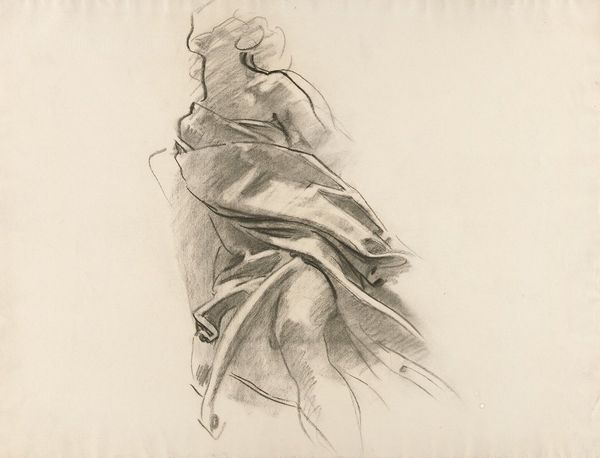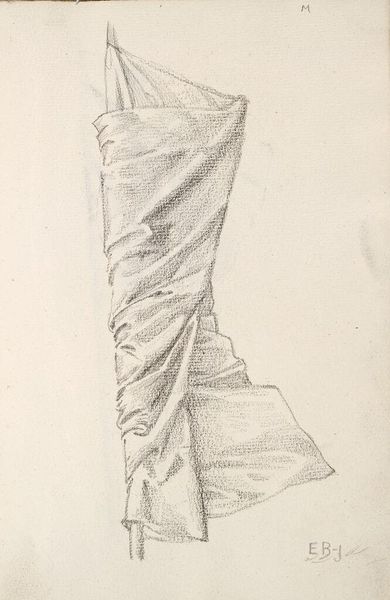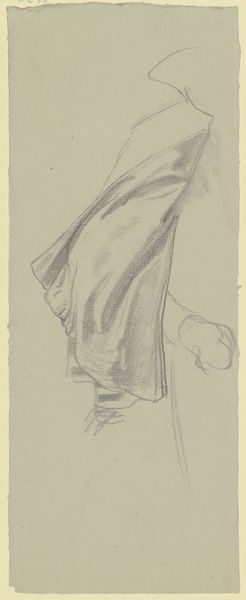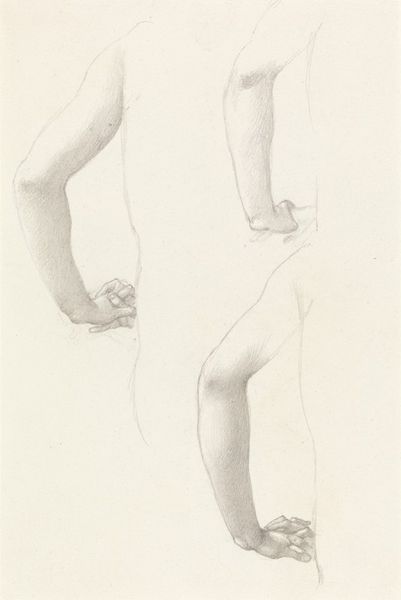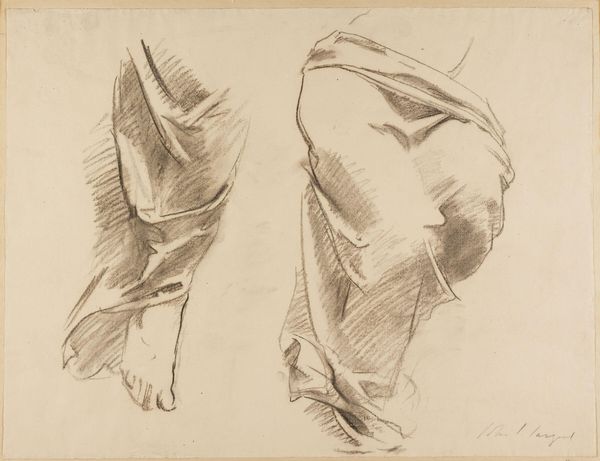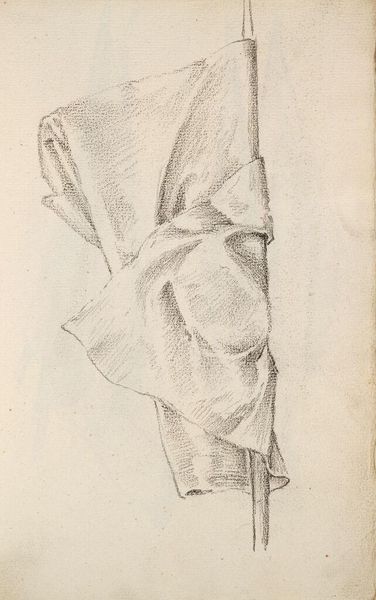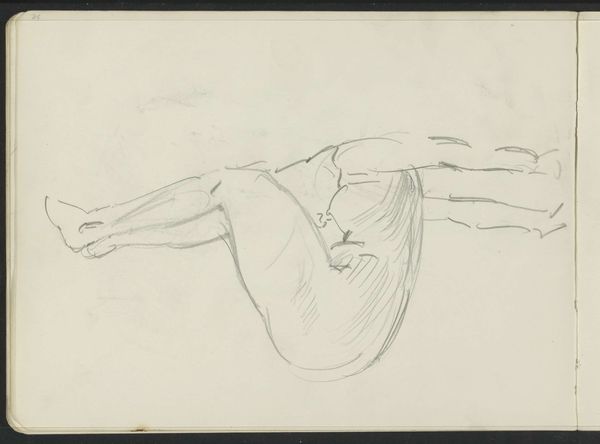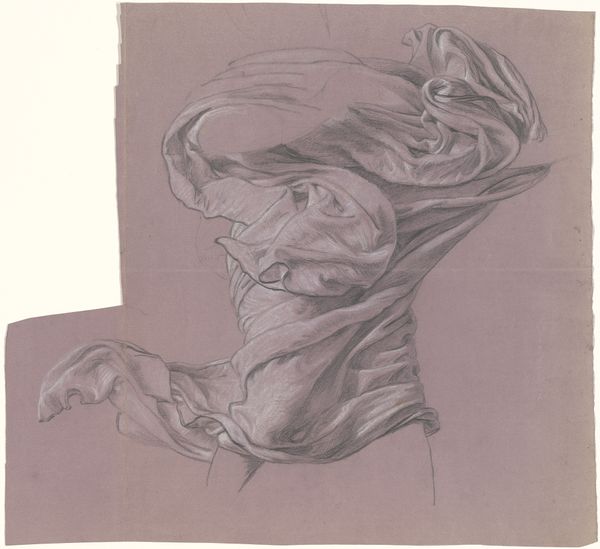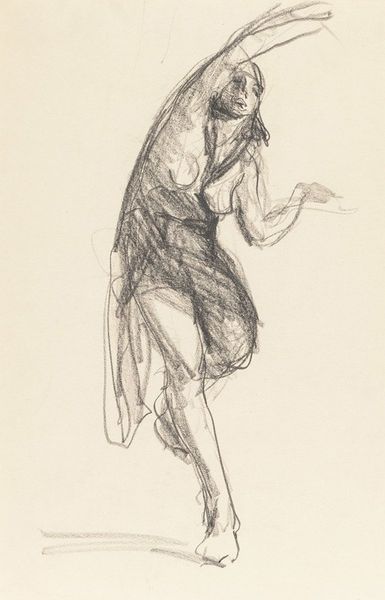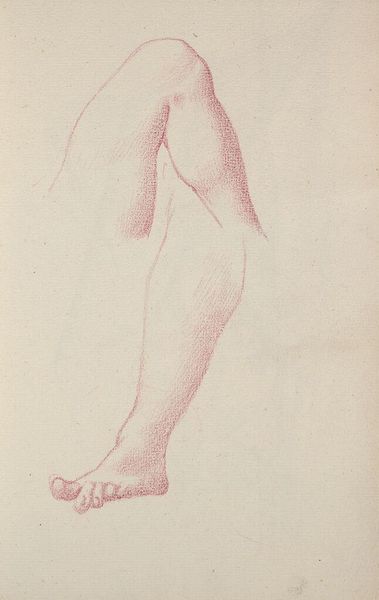
drawing, pencil
#
drawing
#
charcoal drawing
#
figuration
#
pencil drawing
#
pencil
#
portrait drawing
#
academic-art
#
modernism
Copyright: Public Domain: Artvee
Curator: John Singer Sargent's "Study of a Draped Figure," dating from about 1920 to 1925, is a striking piece done in pencil and charcoal. Editor: Immediately, I'm struck by the texture. The heavy, almost sculptural quality of the drapery contrasted with the sketchiness of the exposed limb creates an intriguing tension. You can almost feel the weight of the fabric. Curator: Sargent's academic background shines through here. Studies like these were crucial for artists trained in the classical tradition. The rendering of fabric was a significant way to demonstrate skill and understanding of form. Editor: Exactly. The process of layering the charcoal to create these deep shadows interests me. He’s not just representing drapery, he’s exploring the behavior of light and shadow on a complex surface. What kind of labor went into creating these preparatory studies and how did those skills transfer into other work of his time? Curator: These drapery studies informed Sargent's approach to portraiture and mural work, particularly his decorations at the Boston Public Library. His patrons were invested in promoting his art in support of institutions committed to cultivating public tastes and knowledge. Editor: Absolutely, and it reveals so much about the hierarchies and social values embedded within these institutions. Beyond the technical virtuosity, I'm also wondering what message is conveyed through these traditional materials? Curator: Perhaps the pencil and charcoal offers a sense of accessibility? It lacks the pretension of oil paint, inviting a closer engagement with the artistic process. A look into his way of working. Editor: I agree. The materiality connects it back to basic elements: carbon, graphite, paper. It democratizes art-making by hinting at its very beginnings, from sourcing to making and consumption by his devoted public. Curator: Considering this study within Sargent's larger body of work, and the era's artistic climate, gives insight into his multifaceted career, as he expertly balanced the demands of tradition and modernity. Editor: Yes. Seeing the process laid bare in a drawing, one cannot avoid thinking about not just *what* it represents, but *how* that representation was built, layer upon layer with charcoal, from the raw materials available in his immediate surroundings. Curator: It has been illuminating to consider this work by Sargent. The convergence of academic tradition, the materiality of process, and Sargent's commitment to skill really does offer a rich context. Editor: Agreed. Analyzing the social contexts that allowed Sargent to produce such skilled art opens up possibilities of new perspectives to think with both tradition and progress.
Comments
No comments
Be the first to comment and join the conversation on the ultimate creative platform.

